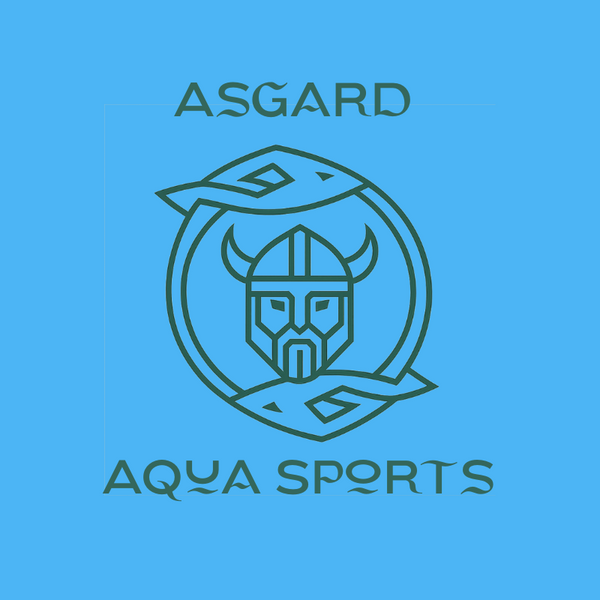Despite what many people think, kayaking offers a variety of benefits for both your body and mind. It's a low-impact activity that can improve physical fitness, enhance cardiovascular health, and contribute to mental well-being by reducing stress levels.
So, let’s dive into the numerous benefits that kayaking offers for your overall well-being, both physically and mentally.
Is Kayaking a Good Exercise?
Yes, kayaking is indeed a good exercise. It can be as relaxed or as intense as you choose. Kayaking offers a range of intensity levels, from leisurely paddling in calm waters to more strenuous workouts in challenging conditions.
Many beginners find that kayaking provides a comprehensive workout that engages the upper body, core muscles, and leg muscles, leading to overall body fatigue. And that’s a sign of a beneficial exercise session.
Additionally, kayaking is a low-impact and aerobic exercise, making it ideal for improving cardiovascular health and enhancing overall fitness levels. Even at a leisurely pace, kayaking can still provide an effective workout.
Health Benefits of Kayaking
1. Aerobic Fitness:
Paddling a kayak requires constant exertion, which increases your respiration rate. Over time, this can improve lung capacity, heart health, and vascular function. This helps in enhancing your body's ability to deliver oxygen to muscles. Aerobic fitness also leads to improved endurance, decision-making skills, concentration, and mental alertness.
2. Weight loss:
Paddling at a moderate speed of around 5 mph requires about 0.1 horsepower of effort. This translates to burning approximately 400 calories per hour. The more time you spend paddling, the more calories you'll burn. This makes kayaking an ideal activity for those looking to manage their weight.
3. Stress Reducing:
The experience of kayaking itself is therapeutic, whether you're navigating fast-flowing rivers or leisurely paddling in calm lakes or parks. The smooth glide of your kayak through the water can be meditative and calming, reducing stress levels and promoting relaxation.
4. Full-Body Workout:
Kayaking engages a wide range of muscles, which we will discuss in the next section. However, paddling at a pace of about 3 mph involves approximately 1500 repetitions, effectively working both upper and lower body muscles and helping maintain overall physical fitness.
What Muscles Are Engaged During Kayaking?

From your back to your biceps, kayaking engages a multitude of muscle groups, sculpting a stronger, fitter physique with each stroke.
So, here are the muscles involved in Kayaking:
- Back Muscles: Your back is home to some of the most powerful muscles for paddling. The Latissimus Dorsi, or ‘lats,’ are the largest in your back and play a key role in each stroke, providing the strength needed to paddle effectively.
- Rhomboids and Trapezius: These muscles, located in your upper back, are crucial at the end of each stroke, helping to pull your shoulder blades together and support neck and spine movement.
- Shoulder Muscles: Essential for propelling the kayak, your shoulder muscles work in tandem with your arms and back. It’s important to balance their use to prevent overdevelopment and maintain muscle harmony.
- Rotator Cuff: This group of four muscles connects your shoulders to your arms and is vital for maintaining shoulder strength and stability during kayaking.
- Arms and Grip: Your biceps and triceps work opposite each other when you paddle, giving your arms a balanced workout. A firm grip on the paddle is essential for effectively using these muscles and ensuring a powerful stroke.
- Chest Muscles: While not as obvious, your chest muscles contribute to the cardiovascular aspect of kayaking, working in sync with your back during each paddle stroke.
- Legs and Core: Surprisingly, your legs and core are integral to kayaking. They provide balance and power, with your core muscles being the link that allows for efficient torso rotation and overall strength.
- Heart: Kayaking is also a heart-pumping activity. Depending on various factors, you can burn a significant number of calories, which contributes to cardiovascular health.
Choosing the Right Kayak
When choosing a kayak, consider your specific preferences and needs, as there are various brands and models available to suit different purposes.
- For fishing enthusiasts, Asgard Aqua Sports offers affordable and practical options with its fishing kayak lineups, which deliver on both performance and reliability.
- If you're looking for leisurely paddling, the Leisure Kayaks lineups from Asgard Aqua Sports provide comfort and value.
- For fitness-focused individuals, opt for the FatStick Explorer Kayak - Double Seat, crafted for extended outings and tailored to the needs of experienced kayakers.
Conclusion
Overall, kayaking offers a full-body workout that not only helps you stay in shape but also lets you enjoy the great outdoors. It’s an exercise for the body and a refreshing experience for the mind.
So, grab your paddle, embark on your kayaking journey of fitness and discovery, and transform your mindset.

